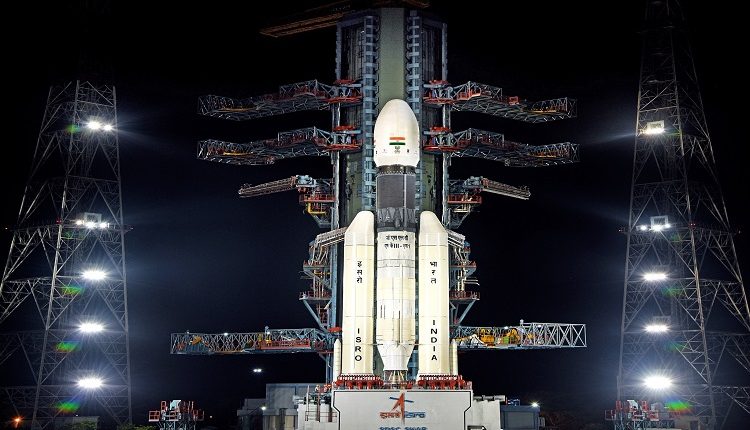Everything you wanted to know about Chandrayaan-2
Chandrayaan-2 was successfully launched today after a week’s delay. The mission has generated tremendous interest among people from all walks of life. But what’s so special about this mission that the world is looking forward to this launch?
What makes Chandrayaan-2 special?
- Chandrayaan 2 is designed to go where no country has ever gone before — the Moon’s south polar region.
- It’s the 1st Indian mission to explore the lunar terrain with home-grown technology.
- It is the first space mission to conduct a soft landing on the Moon’s south polar region.
Aim of the mission
Through this mission, scientists aim is to improve their understanding of the moon, thus leading to a paradigm shift in how lunar expeditions are going to be approached for years to come
Why is ISRO going to the moon again?
As per ISRO, “the moon is the closest cosmic body at which space discovery can be attempted and documented. It is also a promising test bed to demonstrate technologies required for deep-space missions. Chandrayaan 2 attempts to foster a new age of discovery, increase our understanding of space, stimulate the advancement of technology, promote global alliances, and inspire a future generation of explorers and scientists.”
Scientific objectives of Chandrayaan 2
Moon is believed to provide the best linkage to Earth’s early history, offering an undisturbed historical record of the inner solar system environment. Through this mission, scientists hope to do extensive mapping of lunar surface to study variations in its composition; and further investigate into the Chandrayaan-1’s discovery of the evidence for water molecules on the moon. Scientists suspect the possibility of the presence of water in permanently shadowed areas in the South Pole region. Also, this region has craters that are said to be cold traps and contain a fossil record of the early solar system.
Challenges of moon landing
Following challenges were faced by ISRO during this mission:
- Trajectory Accuracy
The distance to the moon is approx 3.844 lakh km. Ensuring trajectory accuracy while navigating such a large distance poses many challenges as trajectory is influenced by the non-uniform gravity of the Earth and Moon, gravitational pull of other astronomical bodies, solar radiation pressure, and the Moon’s true orbital motion.
- Deep-space Communication
Owing to the large distance from the Earth and limited onboard power, radio signals used for communication are weak and heavy background noise, which needs to be picked up by large antennas.
- Trans Lunar Injection (TLI) and Lunar Capture
Moon’s location is continually changing due to orbital motion, thus the intersection of Chandrayaan-2 and the Moon’s path had to be predicted in advance with a very high level of accuracy.
- Orbiting around the moon
Lunar gravity is lumpy due to uneven mass distribution under its surface. This influences the orbit of the spacecraft. Also, in order to keep onboard electronics safe, it’s essential to have the precise knowledge of the thermal environment at orbital altitude.
- Soft landing on the moon
This is divided into ‘rough braking’ and ‘fine braking’. Variation in local gravity had to be factored into the lunar descent trajectory. For a successful landing, it is important that the onboard NGC and propulsion system should work in unison, autonomously and automatically. Further, the landing site landscape features should not result in a communication shadow area.
- Lunar dust
The lunar surface is covered with craters, rocks and dust. Firing of onboard engines close to the surface results in backward flow of hot gases along with dust. Lunar dust is miniscule, hard, barbed and jagged. Its negative charge makes it stick to most surfaces, causing a disruption in deployment mechanisms, solar panel performance, and NGC sensor performance.
- Extreme temperatures and vacuum
A lunar day or night is equivalent to 14 earth days. This results in extreme surface temperature variations. Moreover, the ambient pressure of the lunar surface is a hard vacuum. This makes the lunar surface an extremely hostile environment for lander and rover operations.
Components of Chandrayaan-2
It has three modules namely Orbiter, Lander (Vikram) & Rover (Pragyan). While the Orbiter and Lander modules are stacked together as an integrated module, the Rover is housed inside the Lander. Chandrayaan-2 will be launched into the earth bound orbit by GSLV MK-III (India’s most powerful launcher to date which is capable of launching 4-ton class of satellites to the Geosynchronous Transfer Orbit).
- Orbiter
It is capable of communicating with Indian Deep Space Network (IDSN) at Byalalu as well as the Vikram Lander. Its mission life is one year.
- Vikram Lander
Named Vikram after the Father of the Indian Space Programme, Dr Vikram A Sarabhai, it is designed to function for one lunar day (that is, 14 earth days). It can communicate with IDSN at Byalalu as well as with the Orbiter and Rover. It is designed to execute a soft landing on the lunar surface.
- Rover — Pragyan
This 6-wheeled robotic vehicle can travel up to 500 m (½ km) and leverage solar energy for its functioning. It can only communicate with the Lander.
Source: ISRO
Do you feel strongly about something? Have a story to share? Write to us at info@thepeepertimes.com or connect with us on Facebook or Twitter




Comments are closed, but trackbacks and pingbacks are open.